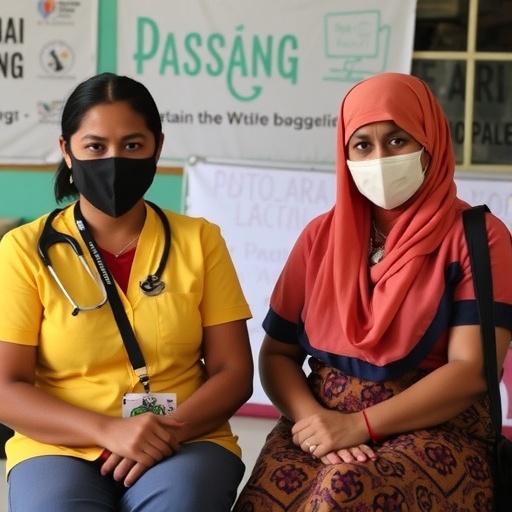In today’s complex healthcare landscape, nursing professionals find themselves at the frontline of patient care while simultaneously managing safety and quality assurance within their organizations. A recent qualitative study published in BMC Nursing titled “From audit to action: nurses’ experiences turning incident analyses into practice change—a qualitative process evaluation” delves into the intricate transition nurses undergo when shifting focus from merely identifying incidents to implementing tangible changes that improve patient care outcomes. This evolution from awareness to actionable insights is not just a matter of procedural adjustments but a fundamental shift in the nursing paradigm.
The study, led by a team that includes noted researchers Abdulqader, Ali, and Alamoudi, explores the qualitative experiences of nurses as they engage in incident analysis and subsequent practice changes. By shedding light on these experiences, the research illuminates the myriad factors that influence how nurses interpret data from incident audits and then leverage this information into improved care practices. The findings are anchored in the understanding that nurses are pivotal in shaping healthcare safety and effectiveness, often acting as the bridge between data and patient care enhancement.
What emerges from this evaluation is a broader understanding of the psychological and systemic hurdles faced by nurses. The study identifies that while nurses possess the expertise and frontline insight necessary to instigate change, they often encounter barriers such as organizational culture, inadequate support systems, and the need for training in translating incident data into actionable strategies. This narrative illustrates the complexities surrounding nursing practice, emphasizing that changing practice is not as simple as recognizing an issue; it requires structural support and comprehensive awareness from healthcare institutions.
The research emphasizes the critical role of effective communication in transforming incidents into positive practice modifications. Dialogue among nursing staff, management, and other healthcare professionals is pivotal. Such collaborative discussions help nurses contextualize incidents and identify sustainable solutions that enhance patient care practices. Without this dialogue, the findings from incident analyses risk being overlooked, leading to repeat mistakes and unaddressed quality issues.
Moreover, the results highlight that ongoing education and training play vital roles in creating a culture of safety and improvement. By equipping nurses with the tools to analyze incidents critically and transform these insights into practice adjustments, hospitals can enact significant changes that directly benefit patient outcomes. The findings advocate for an investment in continuing education as a necessity rather than an option, reinforcing the need for professionals who are not only skilled in clinical tasks but also adept in reflective practice and quality improvement methodologies.
In assessing the emotional toll that incident reporting and analysis can have on nursing staff, the study points out the need for supportive environments that also address nurses’ mental well-being. Chronic exposure to patient incidents can lead to moral distress and burnout, further complicating the pathway to effective practice change. This reinforces the interest in organizational support systems that extend beyond merely procedural updates; they must also encapsulate emotional and psychological support for nursing staff.
As nursing practices evolve, the study emphasizes the necessity of integrating technology to aid incident analysis. With the advent of electronic health records (EHR) and data analytics tools, there is an unprecedented opportunity for real-time monitoring of incidents and improving responses. The researchers propose that harnessing these technological advancements could facilitate timely practice changes and broaden nurses’ abilities to contribute to more informed decision-making processes.
From a broader perspective, the importance of this study cannot be overstated. As healthcare organizations globally seek to optimize patient care quality, insights from this qualitative analysis serve as a blueprint for implementing structural changes. The vulnerability of nursing practice illustrates the essential grounding in both the art and science of healthcare, compelling institutions to reconsider traditional hierarchical structures that may inadvertently stifle nursing contributions.
In conclusion, Abdulqader et al.’s investigation into the experiences of nurses offers a compelling argument for rethinking how incident analyses can lead to actionable practice changes. By building a culture that values the insights of frontline nurses and providing them with adequate tools and support, healthcare institutions can ultimately enhance the quality of care they deliver. This aligns with the larger goals of patient safety and satisfaction while ensuring that nurses are not only seen as caregivers but influential agents of change within healthcare systems.
The implications of this research extend beyond individual institutions, emphasizing a need for a systemic shift across healthcare environments to recognize the invaluable contributions of nursing professionals. In doing so, the healthcare industry can make significant strides toward a more integrated, cooperative approach to patient care that not only improves safety but also supports the professional satisfaction and development of nurses themselves.
The importance of continuous evaluation and adaptation in nursing practices also serves as a reminder that healthcare is a dynamic, ever-evolving field. Future research should continue to explore how best to facilitate this transformation and ensure that nurses remain empowered to turn lessons from audits directly into enhanced patient care practices.
Incorporating these findings into policy and practice not only benefits patients but also reinforces nursing as a profession capable of driving meaningful change. As the study by Abdulqader and colleagues highlights, the journey from audit to action is a multifaceted process, necessitating collaboration, education, systemic support, and a willingness to embrace change at every level of healthcare administration.
This exploration of nurses’ experiences is crucial as we move forward into an era that requires agility and responsiveness in healthcare systems, ensuring that the voices of those closest to patient care—nurses—are integral to shaping the future of health services.
Subject of Research: Nurses’ experiences in transforming incident analyses into practice change.
Article Title: From audit to action: nurses’ experiences turning incident analyses into practice change—a qualitative process evaluation.
Article References:
Abdulqader, A.K.A., Ali, S.I., Alamoudi, F.A. et al. From audit to action: nurses’ experiences turning incident analyses into practice change—a qualitative process evaluation.
BMC Nurs 24, 1349 (2025). https://doi.org/10.1186/s12912-025-03974-1
Image Credits: AI Generated
DOI: 10.1186/s12912-025-03974-1
Keywords: Nursing, incident analysis, practice change, qualitative research, patient safety, healthcare improvement.
Tags: bridging data and patient carehealthcare system challenges for nursesimplementation of care practicesincident analysis in nursingnurses’ experiences in incident auditsnursing practice changenursing safety and quality assurancepatient care outcomesqualitative process evaluation in nursingqualitative study in healthcarerole of nurses in healthcare improvementtransforming data into actionable insights






